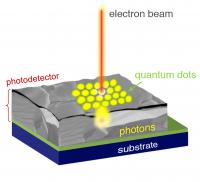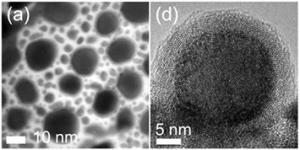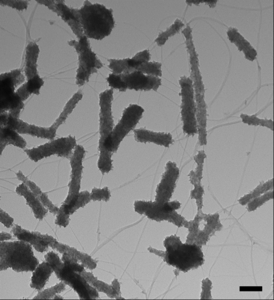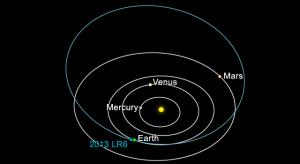Science
Warm Ocean Causing Most Antarctic Ice Shelf Mass Loss

This photo shows the ice front of Venable Ice Shelf, West Antarctica, in October 2008. It is an example of a small-size ice shelf that is a large melt water producer. The image was taken onboard the Chilean Navy P3 aircraft during the NASA/Centro de Estudios Cientificos, Chile campaign of Fall 2008 in Antarctica.
- Read more
- 406 reads
Mars Water-Ice Clouds Are Key to Odd Thermal Rhythm

This graphic depicts the Mars Climate Sounder instrument on NASA's Mars Reconnaissance Orbiter measuring the temperature of a cross section of the Martian atmosphere as the orbiter passes above the south polar region.
- Read more
- 379 reads
M31: Black Hole Bonanza Turns up in Galaxy Next Door

- Twenty-six black hole candidates have been identified in Andromeda, aka M31, adding to 9 previously found.
- This is the largest number of possible black holes to date ever found in a galaxy outside of our own Milky Way.
- These are stellar-mass black holes, which are formed by the collapse of a giant star and have masses between five and 10 times the Sun's.
- Researchers used over 150 separate Chandra observations spread over 13 years to obtain these results.
- Read more
- 413 reads
New quantum dot technique combines best of optical and electron microscopy

Much like in an old tube television where a beam of electrons moves over a phosphor screen to create images, the new microscopy technique works by scanning a beam of electrons over a sample that has been coated with specially engineered quantum dots. The dots absorb the energy and emit it as visible light that interacts with the sample at close range. The scattered photons are collected using a similarly closely placed photodetector (not depicted), allowing an image to be constructed.
- Read more
- 364 reads
An ultrasensitive molybdenum-based image sensor: New material can result in 5 times more sensitive cameras

This prototype is the first ever molybdenum based image sensor, 5 times more sensitive than current silicium-based technology.
- Read more
- 384 reads
Exposure to Air Transforms Gold Alloys Into Catalytic Nanostructures: Brookhaven Lab scientists create promising gold-indium oxide nanoparticles through room-temperature oxidation

Transmission electron microscopy (TEM) images of the gold-indium alloy nanoparticles at room temperature. (A) shows an overview of multiple particles, while (D) shows a high-resolution TEM image of one nanoparticle's crystalline gold-indium core surrounded by the amorphous and catalytic oxide shell.
- Read more
- 428 reads
Is a Sleeping Climate Giant Stirring in the Arctic?

Permafrost zones occupy nearly a quarter of the exposed land area of the Northern Hemisphere. NASA's Carbon in Arctic Reservoirs Vulnerability Experiment is probing deep into the frozen lands above the Arctic Circle in Alaska to measure emissions of the greenhouse gases carbon dioxide and methane from thawing permafrost - signals that may hold a key to Earth's climate future.
2.圖片上傳失敗 原址:
- Read more
- 465 reads
The Diabetes ‘Breathalyzer’: Pitt chemists demonstrate sensor technology that could detect and monitor diabetes through breath analysis alone

A transmission electron microscopy image of the hybrid material revealing the formation of “titanium dioxide on a stick.”
- Read more
- 487 reads
Radar Movies Highlight Asteroid 1998 QE2 and Its Moon

This image of asteroid 1998 QE2 was obtained on June 1, 2013, when the asteroid was about 3.75 million miles (6 million kilometers) from Earth. The small white dot at upper left is the moon, or satellite, orbiting asteroid 1998 QE2.
- Read more
- 556 reads
Small Asteroid Between Earth and Moon Tonight

This illustration shows the path of the small asteroid 2013 LR6, which will safely pass within 65,000 miles (105,000 kilometers) of Earth on June 7 at 9:42 p.m. PDT (June 8 at 12:42 a.m. EDT).
- Read more
- 526 reads
Human Rights
Fostering a More Humane World: The 28th Eurasian Economic Summi

Conscience, Hope, and Action: Keys to Global Peace and Sustainability

Ringing FOWPAL’s Peace Bell for the World:Nobel Peace Prize Laureates’ Visions and Actions

Protecting the World’s Cultural Diversity for a Sustainable Future

Puppet Show I International Friendship Day 2020

